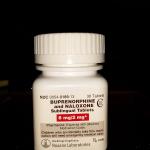buprenorphine
Last March, I wrote about a recent episode of “Cops Pract
Last week the Drug Enforcement Administration announced a new rule that permit
The Atlantic wrote a piece on using buprenorphine in the treatment of opioid addiction and should be congratulated for more widely publicizing opioid substitution therapy.
A new review article in the j






